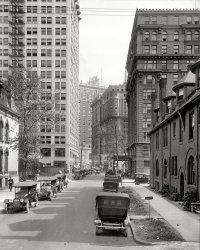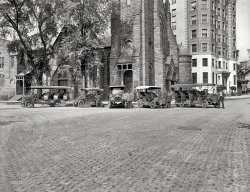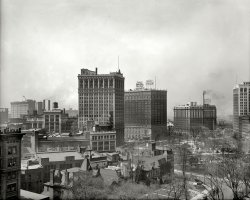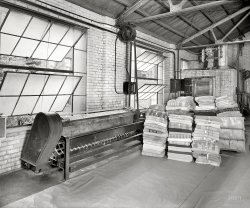
MAY CONTAIN NUTS

Search Shorpy
SHORPY ART

Framed or unframed, desk size to sofa size, printed by us in Arizona and Alabama since 2007. Explore now.
Join and Share
Ad-Free Shorpy
Shorpy is funded by you. Patreon contributors get an ad-free experience.
Learn more.

Recent comments
- Baldwin 62303
- Baldwin VO-1000
- Cold
- No expense spared
- Tough Guys
- Lost in Toyland
- And without gloves
- If I were a blindfolded time traveler
- Smoke Consumer Also Cooks
- Oh that stove!
- Possibly still there?
- What?!?
- $100 Reward
- Freeze Frame
- Texas Flyer wanted
- Just a Year Too Soon
- WWII -- Replacing men with women at the railroad crossing.
- Yes, Icing
- You kids drive me nuts!
- NOT An Easy Job
- I wonder
- Just add window boxes
- Icing Platform?
- Indiana Harbor Belt abides
- Freezing haze
- Corrections (for those who care)
- C&NW at Nelson
- Fallen Flags
- A dangerous job made worse
- Water Stop
Member Photos
The Shorpy
Print Emporium
Print Emporium
Search Shorpy
Search results -- 30 results per page
- The Tuller: 1914
- Detroit, Michigan, circa 1914. "Hotel Tuller, Grand Circus Park." 8x10 inch dry plate glass negative, Detroit ... size.
"Half-ironed pants" More on the Tuller from Forgotten Detroit.
[Also has its own Wikipedia entry . - ... Posted by Dave - 08/09/2012 - 10:39pm -
![The Tuller: 1914 Detroit, Michigan, circa 1914. "Hotel Tuller, Grand Circus Park." 8x10 inch dry plate glass negative, Detroit Publishing Company. View full size.
"Half-ironed pants"More on the Tuller from Forgotten Detroit.
[Also has its own Wikipedia entry. - Dave]
The Ol' Lunch WagonThese antecedents of modern-day diners and catering trucks were common features on the streets of large cities at this time, and were often left at construction sites or in places where lots of people were working late shifts in order to quickly feed the workers there. Here is a picture of a similar "night lunch" wagon on the streets of Detroit, sporting the name of a locally famous hotel that may be familiar to regular Shorpy followers.
Re: Quick LunchSure looks like a diner. Those steps look treacherous. They also look like they could be mass produced.
Right across the street.Is that the corner of a diner on the right? I'd like to see pictures of that.
Windows without glass?In the first level beneath what might be a penthouse, there appear to be several windows without glass or sashes. Also, is that a church next door?
[The side-hinged casements open in. On the left is the Universalist Church of Our Father. - Dave]
AfterthoughtThat top floor looks like they added it after the building was completed.You can't say they didn't get full use of their site! Every square inch is occupied!
[The top floors were added in 1914. - Dave]
Here in DetroitTwo 1914 period Detroit Electrics, identified by their stylish curved front corner windows, at home in their city. Is the intriguing "Qui..." on the right some kind of circus wagon?
["Quick Lunch." Grand Circus means "big circle," which was the shape of the park.- Dave]
ElectricLooks like two Baker Electrics in this picture. If I am wrong I am sure there will be an immediate correction. Go for a ride in one with Jay Leno.
(The Gallery, Cars, Trucks, Buses, Detroit Photos, DPC)](https://www.shorpy.com/files/images/4a25483a.thumbnail.jpg)
- Hotel Tuller: 1980s
- A circa 1980s look at the Tuller Hotel, seen earlier here and here . "Tuller Hotel, 501-521 Park Boulevard. The Tuller Hotel was one of the largest luxury hotels in Detroit in the early ... Posted by Dave - 09/14/2011 - 5:01pm -
![Hotel Tuller: 1980s A circa 1980s look at the Tuller Hotel, seen earlier here and here. "Tuller Hotel, 501-521 Park Boulevard. The Tuller Hotel was one of the largest luxury hotels in Detroit in the early twentieth century, with 800 rooms, each with a private bath. It was also the first hotel built in Detroit's Grand Circus Park district. Lew Whiting Tuller (1869-1957), who erected and operated this hotel, was a major builder of hotels and apartment houses in Detroit in the 1900s and 1910s. The three distinct buildings share a common Italian Renaissance styling." Photograph and caption by the Historic American Buildings Survey. View full size.
Mayor Coleman Young EraA more apt description would be that this is the Detroit of the Coleman Young era.
If anyone is interested in seeing the difference between the vacant properties of Detroit against the border of affluent Grosse Pointe, look no further than the satellite photo of Google maps and the Alter Road divider to see an infill landscape (GP) versus plenty of land (Det) where thousands of homes stood less than 20 years ago.
This is the area where Charlton Heston and my father grew up (although neither knew of the other).
You've heard of the Honeymoon SuiteThis must be the Homewrecker Suite.
Afterparty Is this after Charlie Sheen stayed there?
AlmostToo sad for words. I was looking earlier this evening at a series of pictures showing how some of the great buildings in Detroit have fallen into neglect and disarray. A great shame.
Liberalism's Great SocietyLiberalism's Great Society in actual practice, and what they intend to do to our entire country, if we don't stop them.
[This is Reagan-era Detroit, a city whose decline does not have much to do with "liberalism," or politics in general. - Dave]
Downward Spiral Just heard on NPR yesterday how Detroit's population has fallen from a high of 2 million to around 700,000 today. While I knew Detroit was in a bad way I had no idea the depth of its despair. Hard to believe the "Motor City" of my youth in the 50s and 60s has lost its prominence. How quickly it has faded.
I thinkthe Who must have stayed here. And thank you, Dave, for the nippage in the bud of political nonsense. There's already too much snarkery in the world. Shorpy is above all that.
Hold up there, CowboyRadical Liberalism began in the 1960s hippie movement in SanFrancisco while Reagan was still a cowboy riding his pinto across the make believe range. Radical Liberalism's rampant runaway across America is alive and well and great cities in this country are all on the decline because of it. This hotel room is repeated all over America. it's not political, it's a fact.
[Factwise, when the hippies were grooving to the Summer of Love in San Francisco, Ronald Reagan was governor of California. In 2010, Detroit is depopulating as the auto industry there declines. More people would link the export of manufacturing to the free-trade policies of conservative administrations than to any kind of "liberalism." What would really be interesting (or entertaining) would be to lay out the specifics of how "liberalism" is responsible for the condition of this hotel room. As for it being "repeated all over America," the number of ancient abandoned highrise hotels in this country is probably close to zero. - Dave]
I base my comments more on what I see happening in middle america where rampant extremist liberalism deposited its payload, not so much on THIS hotel room in THIS city. Point about Reagan whether he was riding the range or not, is HE had nothing to do with this hotel room. Where do you live? An Ivory Tower, no doubt where you do not have to mingle with the masses. If you are going to let in one political comment then, speaking from a liberal viewpoint, Shorpy will Also cease to exist. [Roll eyes] Interesting comment from the guy making his political statement commending you for not allowing a political statement. [Roll eyes] You run a good site here, but people are hungry in America, keep your nose clean and give us something to enjoy. [nice of you to allow me this conversation--be nice to continue it in person as so much is lost in text]
[Next up on Fox: "Politically Incoherent." - Dave]
Factwise, there have been some good comments, and some who understand the point I was making. You just aren't one of them, Dave. I had thought you to be a smart guy and now I realize you are just a smart-ass guy. I bet you have a small penis, too.
Current Detroit PhotosColor photos of Detroit's sadder side can be seen here:
http://www.marchandmeffre.com/index.html
The Tuller isn't part of the set but others show the loss of what Detroit had been.
Here Comes The Political MessWhy is it some people just have to share their political opinions with you? Please go where they care about your political opinion; you see I could not care less about your political views. Now if you have photos to share you have my attention.
A common cycleMany a respectable hotel has gone through a cycle of decline. This is not a new thing. As fashions move on, the rising cost of redecorating to stay high-end or even respectable, at some point, intersects with falling revenues. Buildings obsolesce, become more costly to maintain, leaving less money for services. Clientele becomes more and more down-market, until the building finally succumbs to decades of neglect. Sometimes, after a decade or so of dereliction, the establishment finds new owners and new capital, and rebounds. The Tuller was not so lucky. As we have seen, some folks are just itching to blame this cycle on '60s liberalism (cue eye-roll), but this cycle played itself out many times before that decade.
PoliticsI think there were some politicians of all types who contributed to the decline of Detroit, most prominently in the mayor's office. That said, Shorpy is a much better place when it is nonpartisan.
Damn Hippies Killed the TullerSorry, I just couldn't help the title. The image came first. The room just creeped me out.
YIKES!Looks like they kept the "DO NOT DISTURB" sign out to long.
I was hereI was one of the architectural team that evaluated the condition of the hotel just before it was demolished, and the seeds of its decline were sown back in the 20's and 30's, and are not the result of liberalism, Reaganomics, or anything more complicated than the poor decisions of the owners. The additions to the hotel, especially the one on Washington Boulevard side, were poorly planned and poorly executed - you had to go outside across a metal fire escape just to get from one side of the hotel to the other! The original hotel could never have been called elegant, and its decor over the years just got worse until a 1950's remodel made it look up to the minute in 1954, but terribly dated by 1960. Every other major hotel in Detroit, the Statler, the Hilton, the Cadillac, the Fort-Shelby, was ruined by 'modernizations' in the 50's, 60's and 70's that replaced or covered the original elegance and classic details in favor of ersatz 'luxury' that faded quickly. The thing that killed them ALL, however, was the opening on the Westin in the Renaissance Center in the early 1970's. How could any old, drafty, non-air conditioned hotel with its rattly elevators, cracked plaster, peeling paint and knocking radiators compete with a 2000 room glass and concrete symbol of the future? Both the Cadillac and the Fort Shelby have been renovated and re-opened, both required complete gutting and both required conversion of half of the building to condos, just to pay the bills. Now these are the hot new properties, and the Westin looks tatty. The Tuller WAS too far gone to save, its fate was sealed in the 1950s.
The '67 riots sealed Detroit's fateIn addition to the usual business cycle of fancy old hotels losing favor to newer "better" hotels, the city of Detroit received a huge black eye 15 to 20 years prior to this photo.
"White flight" was in full swing by the time of the 1967 riot in Detroit. After the riots, the prosperous black population wanted to move out of the city too. The result was the affluent property and business owners moved to the suburbs. Without a reason for wealthy hotel patrons to visit the city why would there be a need for a luxury hotel in the city?
Idiot's delightNobody has pointed out that the Republican party chose to hold its 1980 convention and nominate Ronald Reagan in Detroit. The idea was to showcase the problem city--AND to promise that things would be different. With 30 years' perspective, we can draw conclusions about both of those notions.
The Tiresome Discussion About DetroitWhy must every discussion of my hometown devolve into either tirades about the evils of "liberalism," or none-too-subtle allusions to race (the "Coleman Young wrecked the paradise that was Detroit" angle), or some nasty combination of the two? But oh-so-little consideration seems to be given to the underlying economic structural factors and technological tides that have been much more historically important in making it both the great boom town of the early 20th century and the poster child of urban dissolution in more recent decades.
Jeez o peteI think that the decline of big cities has less to do with the tidal flows of two-party politics, and more to do with the invention that made Detroit what it was, the automobile... and the mass migration of everybody with money out of those cities. Not to mention poor city planning of the 50s-60s that slashed many urban neighborhoods into pieces with freeways. Cities have only begun to recover in the past decade. In any case, I find it difficult to see how hippies are to blame, especially not for our present and future problems considering that generation is nearly in its 70s.
(The Gallery, Detroit Photos, HABS)](https://www.shorpy.com/files/images/339513pu.thumbnail.jpg)
- Statler and Tuller: 1920
- ... toward Washington Boulevard, and Hotels Statler and Tuller." 8x10 glass negative. View full size.
Arbuckle, perhaps Is ... was in was demolished in 2009.
No Happy Endings The Tuller was demolished in 1992, and the Statler went down in 2005. Both had sat ... Posted by Dave - 07/24/2012 - 9:55pm -
![Statler and Tuller: 1920 Detroit, Michigan, circa 1920. "Grand Circus Park, looking toward Washington Boulevard, and Hotels Statler and Tuller." 8x10 glass negative. View full size.
Arbuckle, perhapsIs that a theatre marquee in the lower right corner the reads FATTY? This would be about a year before the famous Fatty Arbuckle scandal.
re: ArbuckleLightening up that bit at the lower right does indeed point to the marquee reading both "Fatty Arbuckle" as well as "Talmadge." He worked with Natalie Talmadge in three short comedies 1917-1918.
[The Talmadge on the marquee is Constance. - Dave]
Motor CityThe motor car takeover is nearly complete - there are only two equine holdouts in view.
It's the Adams Theatre marqueeat lower right. It was at 44 Adams Avenue West and opened in 1917 as a vaudeville house before switching to movies the following year. After numerous renovations and direction changes, the Adams finally closed in 1988. The Fine Arts Building it was in was demolished in 2009.
No Happy EndingsThe Tuller was demolished in 1992, and the Statler went down in 2005. Both had sat vacant for well over a decade. They were replaced by... well, nothing yet.
Oh, and the theater in the foreground showing the Fatty Arbuckle movie? It is the then-new Adams (opened in 1917). It was torn down in 2009, except for its facade, which rather spookily stares down empty-eyed on the park across the street
Street level viewHere's a street level view of the Statler and Tuller from a different corner of Grand Circus Park:
https://www.shorpy.com/node/6736?size=_original
ShorpyvilleI have recently been inspired by photos posted here. I call my series "The twilight world of Shorpyville."
[Ooh. Intriguingly eerie! - Dave]
(The Gallery, Cars, Trucks, Buses, Detroit Photos, DPC)](https://www.shorpy.com/files/images/4a25726a.thumbnail.jpg)
- Chop Suey Canyon: 1916
- ... to the top hotels of Grand Circus Park: The Hotel Tuller and the Hotel Statler.
View Larger Map
Tuller Hotel My grandfather was a window washer in the late 1930s at the ... Posted by Dave - 07/24/2012 - 9:56pm -

- Tourist Auto Co.: 1910
- ... Auto Co. (Tourist buses in front of church with Hotel Tuller at right)." Detroit Publishing glass negative. View full size.
... Posted by Dave - 08/21/2012 - 12:00pm -

- Detroit Creamery: 1915
- ... circa 1915. "Detroit Creamery Co." At right, the Hotel Tuller; at left, a dealer in Studebaker wagons. 8x10 inch glass negative, ... of where the camera was).
[The photo shows the Hotel Tuller annex addition completed in 1910. Horse-drawn ice and milk wagons ... Posted by Dave - 03/30/2022 - 1:38am -
![Detroit Creamery: 1915 Detroit circa 1915. "Detroit Creamery Co." At right, the Hotel Tuller; at left, a dealer in Studebaker wagons. 8x10 inch glass negative, Detroit Publishing Company. View full size.
I see... what looks to me like a little person peeking out of the window above and between the words DETROIT and CREAMERY to the right of the main doors. Then there is the pair discussing something -- or at least, a young man is gazing out of the window while someone (I can't tell if it is another gent or a lady but I suspect it is the former) is speaking earnestly to him. The horse second from right is either sneezing or neighing, or both ... and the black wagon to the far right is decorated with swastikas, which, according to Wikipedia, were a symbol of auspiciousness and good luck in the West prior to 1930.
Thanks, Dave. I was going to say, either a little person peeking out, or a flower pot.
"Circa" covers a lot of territoryRumour has it this photo is somewhat older: 1908 ... which seems more consistent w/ the lack of motor vehicles (OTOH in 1915 they proudly announced the opening of their new garage and stables for "253 horses...and 132 milk wagons", so who knows?)
And don't even think about checking: nothing remains at Cass and Grand River but the sky (Tho an utterly charming Romanesque building remains from to the left of where the camera was).
[The photo shows the Hotel Tuller annex addition completed in 1910. Horse-drawn ice and milk wagons were used well into the 1950s. - Dave]
The Tuller could settle it, but, unfortunately the side we're seeing - in this print anyway - is the Adams Street side, which was built c. 1906. (I'll concede however it must be after the 1910 addition of 5 floors to the top).
[The "New and Greater" Detroit Creamery and Ice Plant shown here had its grand opening in February 1911. This is not a print -- it's an inverted scan of the camera negative. - Dave]
Good Luck and ProsperityThat's what the swastika on the back of the wagon, far right, symbolizes in Asian cultures. It became infamous about twenty years after this photo, when adopted as the symbol of the Aryan "race" by the Nazis. One wonders what the lettering on the wagon says.
[STANDARD LAUNDRY. Which advertised in the city's German newspapers. - Dave]
Don't Cry over Spilled MilkIt appears that the Creamery was located at the three-way intersection of Cass Avenue (to the left), Middle Street (to the right), and Grand River Avenue in the foreground. Middle ends at Clifford Street, the dark building beyond the laundry wagon. An aerial photo from 1949 shows the building to the left still there, but this corner was already a parking lot.
(The Gallery, Detroit Photos, DPC, Horses)](https://www.shorpy.com/files/images/SHORPY-4a21057a.thumbnail.jpg)
- Grand Circus Park: 1919
- ... Circus Park from Detroit Athletic Club." The Statler and Tuller hotels, and the two Winged Victory statues seen here . Photoplays ... Posted by Dave - 08/21/2012 - 6:31pm -

- The Towels of Abe: 1922
- ... I saw something similar in the flooded basement of the Tuller Hotel in Detroit - it was a sheet ironer. Any way to zoom in closer on ... Posted by Dave - 11/08/2011 - 11:55pm -
























